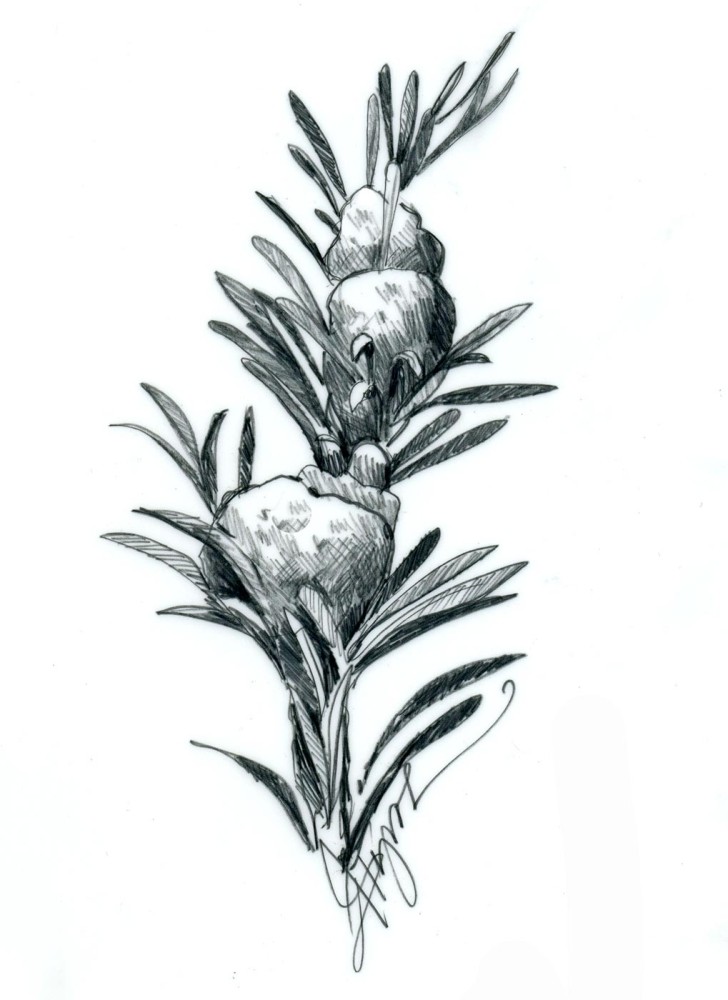
’Tis the season for balsam fir, the fragrant evergreen that adorns our homes through the winter holidays. Its scent and long lasting needle retention make this the most popular Christmas tree and wreath species. Balsam fir is also an important timber species used for lumber. Native to North America, balsam fir (Abies balsamea) grows throughout the more northern latitudes and highest elevations of the country, including in the Northeast. However, researchers predict a northward shift of balsam fir in an increasingly warming climate. Warmer temperatures are also contributing to a rise in populations of an exotic invasive pest – balsam woolly adelgid (Adelges piceae) – which feeds on fir trees, affecting their health and viability as lumber and Christmas trees.
Introduced to North America on nursery stock from Europe around 1900, this tiny, sucking, aphid-like insect attacks true firs. This includes balsam fir and Fraser fir, another popular Christmas tree species native to the southern United States and often cultivated on Christmas tree farms in the Northeast. Balsam woolly adelgid currently exists throughout New England and New York, as well as in the southern Appalachian Mountains, the Pacific Northwest, and central coastal California. Populations have historically remained low at elevations above 2,000 feet. In recent years, however, this pest has expanded in both population and range, likely due to warming temperatures. From 2017 through 2021, Vermont and New Hampshire reported more than 13,500 acres of balsam fir mortality from balsam woolly adelgid.
Feeding by balsam woolly adelgid can cause significant damage and mortality in both cultivated firs and forested trees. On tree farms, balsam woolly adelgid can be effectively controlled with insecticides. There are no known effective controls, however, for forested settings. Several natural enemies, including predatory beetles and parasitic flies from Europe, were released in North America in the 1950s for use as a biocontrol, but none of these have been effective at controlling balsam woolly adelgid.
In Europe, where it is native, balsam woolly adelgid reproduces both sexually and asexually. In North America, only females exist and reproduction is parthenogenetic – without fertilization from males – with two generations per year occurring in the Northeast. Additional generations (up to four) may be present in areas with warmer temperatures, which could increase the severity of damage in a warming climate.
These insects lay masses of up to 200 eggs within a protective white wool, known as flocculence, on tree trunks or branches in summer. Tiny “crawlers,” about 1 mm in length, emerge and develop into adults while feeding on phloem – living tissue just under the bark – using their piercing, sucking mouthparts. Crawlers are mobile and can spread to other trees by wind, or hitch a ride from birds or other animals. Once a crawler begins feeding, it stays anchored to its feeding spot, where it morphs into a nymph and then an adult. Second generation crawlers will remain in place through the winter as nymphs and complete development the following spring. Planning a fir harvest during the winter months, when eggs are absent and crawlers are immobile, can reduce the spread of balsam woolly adelgid throughout the stand.
Balsam woolly adelgid feeds either in the phloem on the face of the trunk, or on the branches, which causes them to swell. Balsam woolly adelgid infestation depletes trees of nutrients and kills new growth, leading to tree mortality. Trees weakened by balsam woolly adelgid are also more susceptible to drought and other secondary damage-causing agents such as bark beetles and armillaria root rot. Christmas trees left untreated will become distorted and unmarketable. Feeding on the main stem also produces irregular growth rings similar to compression wood – known as rotholz – which disrupts water conduction and degrades lumber.
Proper disposal of decorative fir greenery and Christmas trees at the end of the season can help prevent the spread of balsam woolly adelgid. Many municipalities offer Christmas tree recycling programs where trees are composted or turned into mulch. Post-holiday community tree bonfires are also becoming popular. While it may seem easiest to dump trees and greenery in your backyard brush pile or toss them into the woods, they could be harboring pests that can find their way to nearby trees and cause new infestations. You can find more tips and resources for proper disposal of your holiday greenery here.

